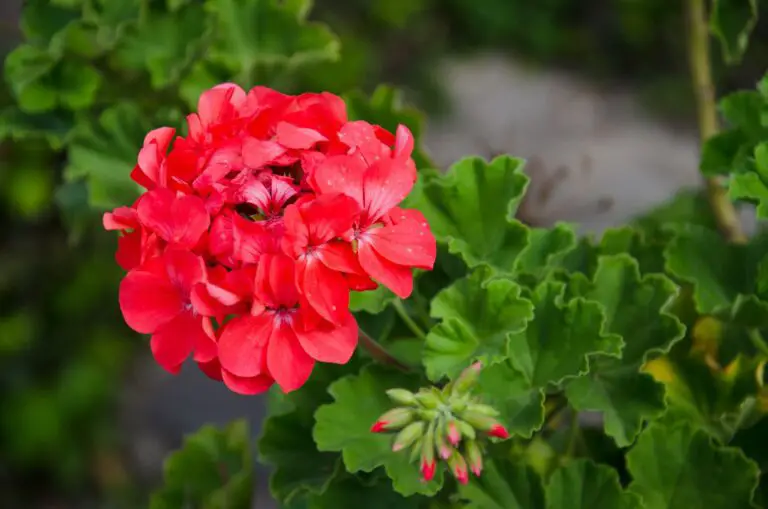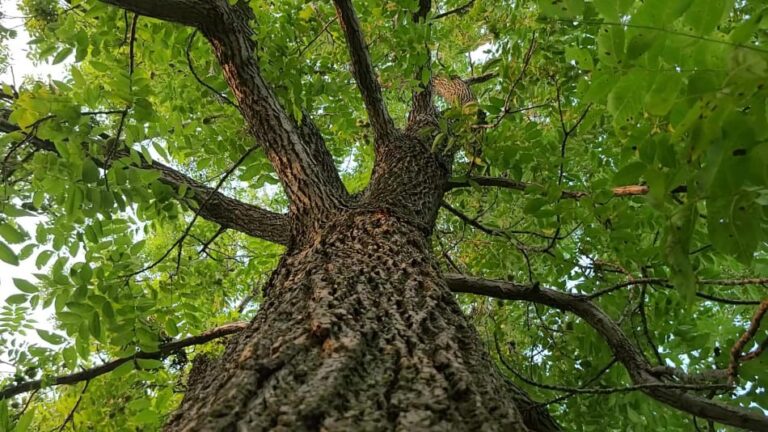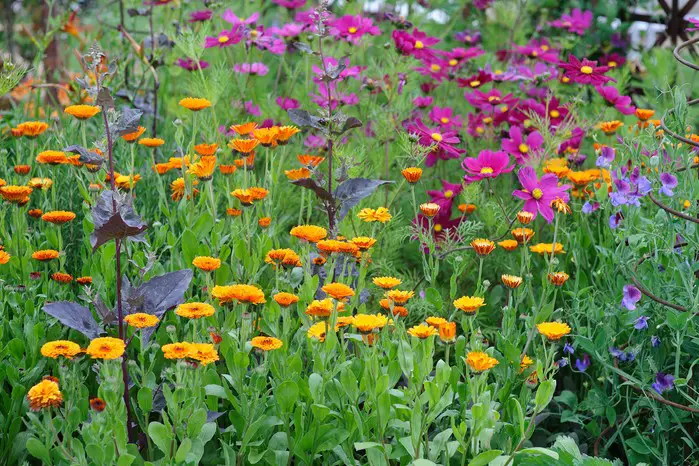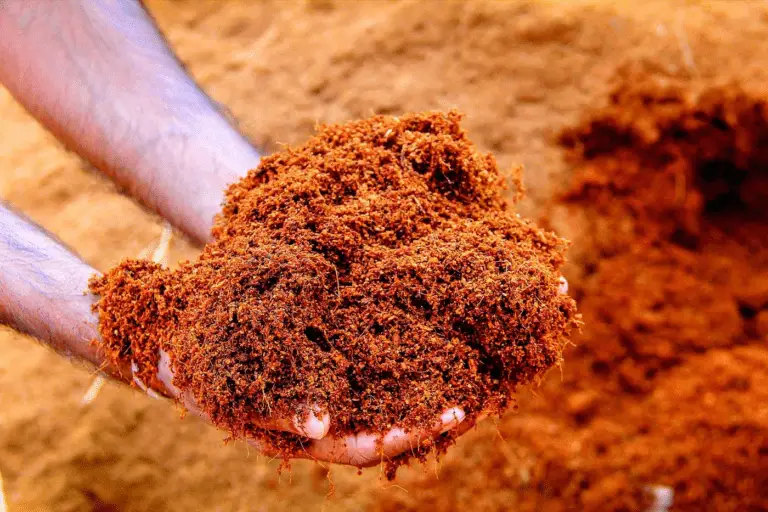Growing Wheatgrass: Super Simple Guide
Table of Contents
What is Wheatgrass and its Benefits of Growing Wheatgrass
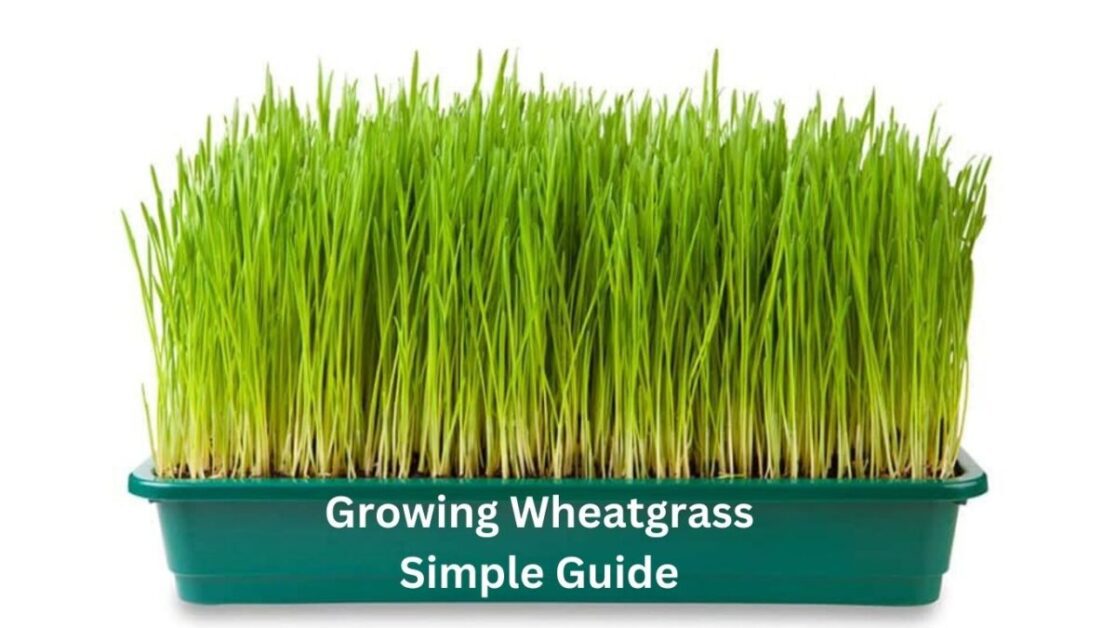
Growing Wheatgrass is a type of young wheat plant, specifically the Triticum aestivum species, which is grown for its numerous health benefits. It is commonly consumed in juice form or as a supplement due to its high nutrient content, including vitamins, minerals, antioxidants, and chlorophyll.
One of the main benefits of wheatgrass is its potential to boost the immune system. It contains vitamins A, C, and E, which all play a crucial role in supporting the immune system and protecting the body against various illnesses and infections. Additionally, it is rich in antioxidants that help reduce oxidative stress and inflammation in the body, thus promoting overall health and wellbeing.
Understanding the Nutritional Value of Growing Wheatgrass
Wheatgrass has gained popularity in recent years due to its impressive nutritional value. Packed with essential vitamins, minerals, and antioxidants, this vibrant green plant offers a plethora of health benefits. One of its key nutritional highlights is its high content of chlorophyll, a pigment responsible for its vibrant green color. Chlorophyll has been shown to have antioxidant, anti-inflammatory, and detoxifying properties, helping to protect the body against harmful free radicals and promote overall well-being.
In addition to chlorophyll, wheatgrass is a rich source of vitamins A, C, and E, providing vital nutrients to support a healthy immune system and promote vibrant skin. It also contains an array of B vitamins that play crucial roles in maintaining energy levels, supporting the nervous system, and aiding in the metabolism of macronutrients. The mineral profile of wheatgrass includes iron, calcium, magnesium, and zinc, which are essential for various bodily functions such as oxygen transportation, bone health, muscle contractions, and immune system regulation.
Moreover, wheatgrass is a potent source of enzymes, including proteases, amylases, and lipases, which aid in the digestion and absorption of nutrients. These enzymes help break down complex molecules into smaller, more easily digestible forms, ensuring optimal nutrient absorption and utilization. Furthermore, wheatgrass contains high levels of fiber, which promotes healthy digestion, regulates blood sugar levels, and supports cardiovascular health. With its impressive nutritional profile, incorporating wheatgrass into your daily routine can be a simple yet effective way to enhance your overall wellness.
Selecting the Right Growing Wheatgrass Seeds
When it comes to selecting the right wheatgrass seeds, there are a few key factors to consider. First and foremost, it’s important to choose seeds that are specifically meant for growing wheatgrass. These seeds are typically untreated and have a high germination rate, ensuring that you’ll have a successful yield.
Additionally, it’s crucial to select organic and non-GMO seeds. Organic seeds are grown without the use of synthetic fertilizers or pesticides, making them a healthier choice for both you and the environment. Non-GMO seeds are genetically unmodified, allowing you to grow wheatgrass that is free from any potential genetic alterations.
Another consideration is to opt for certified seeds. Certified seeds have undergone testing to ensure their quality and purity, giving you peace of mind that you are starting with the best possible foundation for your wheatgrass growth. You can often find information on the certification on the seed packaging or from the supplier.
In conclusion, selecting the right wheatgrass seeds is an important step in ensuring a successful harvest. By choosing seeds specifically meant for growing wheatgrass, opting for organic and non-GMO options, and selecting certified seeds, you’ll be well on your way to cultivating healthy and nutritious wheatgrass in your own home or garden.
Preparing the Soil for Growing Wheatgrass
Preparing the soil is a crucial step in successfully growing wheatgrass. The quality of the soil will directly impact the growth and nutrient content of the wheatgrass. Before planting the seeds, it is important to ensure that the soil is rich in essential nutrients and has the right texture for optimal root development.
To prepare the soil for wheatgrass, start by clearing the area of any debris or weeds. This will help create a clean and healthy environment for the seeds to germinate. Next, loosen the soil with a garden fork or tiller to improve its drainage and aeration. Wheatgrass thrives in well-drained soil, so this step is crucial for preventing waterlogged conditions that can lead to root rot.
Once the soil is loosened, it is essential to enrich it with organic matter. This can be done by incorporating compost or well-rotted manure into the soil. Organic matter not only adds essential nutrients but also helps improve the soil’s structure and moisture-holding capacity.
By carefully preparing the soil, you are setting the foundation for healthy wheatgrass growth. Providing the right balance of nutrients and a well-drained environment will give your wheatgrass the best chance to thrive and provide you with a bountiful harvest of nutrient-rich greens.
Choosing the Appropriate Container for Growing Wheatgrass
When it comes to growing wheatgrass, choosing the appropriate container is an essential aspect of ensuring its successful growth and development. The right container will provide the necessary space for the roots to grow, allow for proper drainage, and maintain the ideal moisture level. Additionally, the container should be durable and have the ability to withstand the weight of the growing wheatgrass.
One option for growing wheatgrass is to use trays specifically designed for this purpose. These trays are typically made of plastic or metal and come with drainage holes to prevent waterlogging. The advantage of using trays is that they can be stacked, making them space-efficient for those with limited gardening area. Another advantage is that they are easy to clean and sterilize, reducing the risk of disease and pests. Additionally, trays provide a shallow growing depth, which is ideal for wheatgrass as it has a relatively shallow root system.
Step-by-Step Guide to Planting Growing Wheatgrass Seeds
Planting wheatgrass seeds is a simple and rewarding process that anyone can do, whether you are a seasoned gardener or a beginner. To get started, you will need a few essential items: wheatgrass seeds, organic soil, a container, and water.
First, select high-quality wheatgrass seeds from a reputable supplier. It is essential to choose seeds that are fresh, viable, and free from any pests or diseases. These seeds will ensure healthy and vigorous growth of your wheatgrass.
Next, prepare the soil by filling your container with organic soil. Wheatgrass thrives in well-draining soil, so make sure to create a mix that provides good moisture retention while allowing excess water to flow through. Spread the seeds evenly over the soil surface, covering them with a thin layer of soil.
Once planted, gently water the seeds, ensuring that the soil stays moist but not overly saturated. Keep the container in a warm and well-lit area, as wheatgrass requires plenty of sunlight for optimal growth. Within a week, you will start to see the seeds germinate, and within two to three weeks, you will have beautiful, vibrant wheatgrass ready for harvest. Follow these simple steps, and you will soon be enjoying the health benefits of freshly grown wheatgrass.
Providing the Ideal Conditions for Growing Wheatgrass
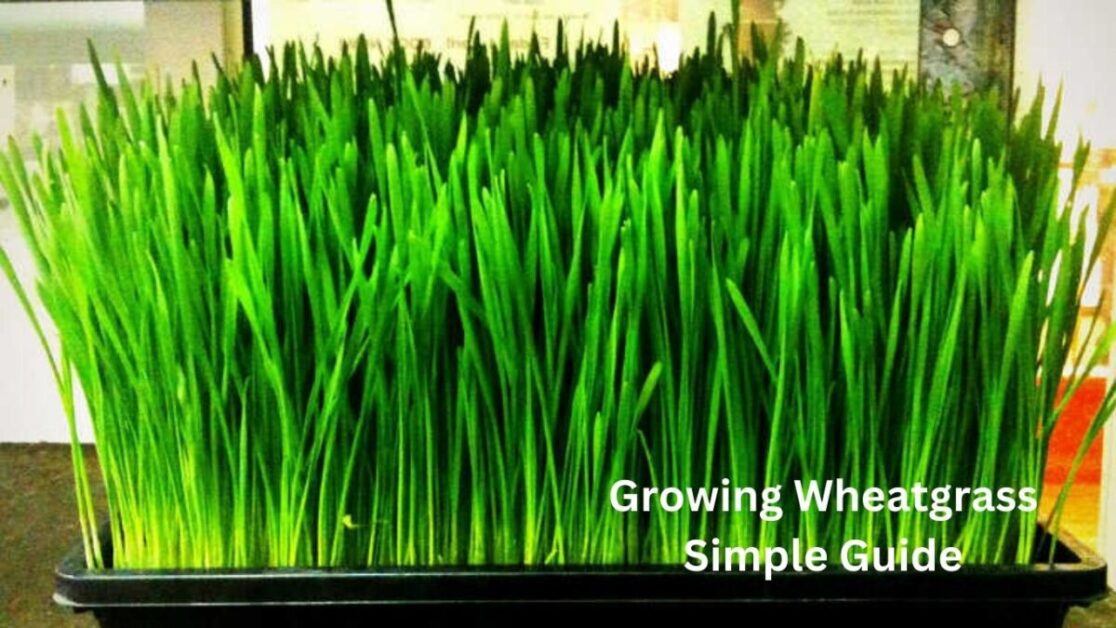
To provide the ideal growing conditions for wheatgrass, there are several key factors that need to be considered. First and foremost is the temperature. Wheatgrass thrives in temperatures between 70 to 75 degrees Fahrenheit (21 to 24 degrees Celsius). It is important to maintain this temperature range consistently, as fluctuations can hinder growth and development.
Another crucial aspect is light exposure. Wheatgrass requires ample sunlight, ideally around 12 to 14 hours a day. If you are growing wheatgrass indoors, consider using fluorescent lights or grow lights to supplement natural sunlight. Position the lights at an appropriate distance to ensure the plants receive sufficient illumination.
Proper watering is also essential for wheatgrass. It is recommended to water the plants thoroughly, allowing the water to drain out freely from the container or tray. However, overwatering should be avoided as it can lead to root rot. Aim to keep the soil moist but not waterlogged.
Lastly, the soil composition plays a significant role. Wheatgrass prefers soil that is well-draining and rich in nutrients. A good mix of organic compost or vermicompost can enhance the soil’s fertility and provide the necessary nutrients for robust growth.
By optimizing these growing conditions, you can ensure that your wheatgrass plants remain healthy and thriving, providing you with a bountiful yield of nutrient-rich greens.
Watering and Moisture Requirements for Growing Wheatgrass
Watering and maintaining proper moisture levels are crucial for the healthy growth of wheatgrass. As a high-moisture plant, it requires consistent hydration to thrive. When it comes to watering wheatgrass, it is important to strike a balance between providing enough moisture and avoiding overwatering.
To determine the ideal watering schedule for your wheatgrass, consider factors such as the weather conditions, the size of your containers, and the soil’s drainage capabilities. In general, wheatgrass should be watered once or twice a day, ensuring that the soil remains consistently moist but not waterlogged. Overwatering can lead to root rot and other fungal diseases, so it is important to monitor the soil’s moisture levels regularly.
One effective way to check if your wheatgrass needs watering is by observing the color and texture of the leaves. If the blades appear yellowish or start to curl, it may indicate that the plant is experiencing dehydration. On the other hand, overly moist soil can cause the blades to turn a pale green or even develop mold. By observing these visual cues, you can adjust your watering routine accordingly.
When watering wheatgrass, it is recommended to use room temperature water or slightly warm water. This helps avoid shocking the roots and promotes faster absorption. Additionally, you can consider using a spray bottle or a misting system to deliver a gentle and even moisture distribution. This method prevents excessive disturbance to the seeds and promotes healthy germination.
In conclusion, proper watering and moisture management are vital for the successful cultivation of wheatgrass. By maintaining consistent moisture levels, you can ensure robust growth and ultimately enjoy the nutritional benefits that wheatgrass offers.
Understanding the Importance of Light for Growing Wheatgrass
Light is a crucial factor in the growth and development of wheatgrass. Just like any other plant, wheatgrass needs an adequate amount of light to carry out photosynthesis, which is the process by which plants convert light into energy. Without sufficient light, wheatgrass may struggle to produce the chlorophyll it needs to thrive.
When it comes to providing the ideal light conditions for your wheatgrass, direct sunlight is the best option. Place your wheatgrass container near a south-facing window or anywhere it can receive at least 6 to 8 hours of direct sunlight per day. However, if direct sunlight is not readily available, you can also use artificial lights such as fluorescent or LED grow lights. Position the lights approximately 6 inches above the wheatgrass to ensure they are receiving adequate light intensity.
Remember, light is not only essential for the wheatgrass’s energy production but also plays a significant role in its overall health and appearance. Insufficient light can result in weak and pale shoots, while excessive shade can lead to leggy and elongated growth. By understanding and providing the optimal light conditions, you can set the stage for healthy and vibrant wheatgrass growth.
Proper Temperature Range for Growing Wheatgrass
Growing wheatgrass requires careful attention to temperature, as this can greatly influence the success and quality of your crop. Wheatgrass thrives in a temperature range of 65 to 75 degrees Fahrenheit (18 to 24 degrees Celsius). This optimal temperature range ensures that the wheatgrass plants can grow vigorously and develop the desired nutritional profile.
Temperatures that are too hot or too cold can negatively impact wheatgrass growth. If the temperature exceeds 80 degrees Fahrenheit (27 degrees Celsius), the grass may become stressed and may not grow properly. On the other hand, temperatures below 60 degrees Fahrenheit (15 degrees Celsius) can hinder germination and slow down growth. It is important to maintain a stable and consistent temperature within the recommended range to promote healthy and robust wheatgrass growth.
To create the optimal temperature conditions for growing wheatgrass, consider using a greenhouse or an indoor area where the temperature can be easily regulated. Monitor the temperature regularly using a thermometer, ensuring that it remains within the ideal range throughout the growth cycle. By providing the right temperature environment, you can maximize the yield and quality of your wheatgrass harvest.
Tips for Preventing Common Growing Wheatgrass Pests and Diseases
Pests and diseases can significantly affect the health and growth of your wheatgrass, making it crucial to take preventive measures to ensure a thriving crop. One of the most effective ways to prevent pest infestation is by maintaining a clean and hygienic growing environment. Regularly remove any dead or decaying leaves, as these can attract pests and harbor diseases. It is also advisable to keep the surrounding area free from weeds and debris, as these can serve as breeding grounds for pests.
Additionally, introducing beneficial insects, such as ladybugs and lacewings, can help control common pests like aphids and mites. These natural predators can be purchased from gardening stores or online, and they work by feeding on the harmful insects that may be damaging your wheatgrass. Remember to research the specific requirements of each beneficial insect before releasing them into your garden, as some may require certain conditions or supplementary food sources.
Another important aspect of preventing pest and disease outbreaks is proper watering and drainage. Overwatering can create conditions that favor the development of mold and fungi, which can harm your wheatgrass. It is crucial to water your plants sparingly, making sure the soil is moist but not waterlogged. Adequate drainage is equally essential, as excess water can lead to root rot and other fungal infections. Ensure that your planting container has proper drainage holes, or consider using a well-draining growing medium if you are cultivating wheatgrass hydroponically.
By implementing these preventive measures, you can minimize the risk of pests and diseases causing irreparable damage to your wheatgrass, allowing it to thrive and reach its full potential. Stay vigilant, monitor your plants regularly, and intervene at the first sign of any issues to ensure the long-term health and productivity of your wheatgrass crop.
When and How to Harvest For Growing Wheatgrass
Harvesting wheatgrass at the right time is crucial to ensure optimal nutritional value and taste. Most wheatgrass reaches its peak growth around 7 to 10 days after planting, when it has reached a height of roughly 6 to 8 inches. At this stage, it is packed with essential nutrients and enzymes, making it the perfect time to harvest.
To harvest wheatgrass, you will need a pair of sharp scissors or a clean, sharp knife. Carefully cut the wheatgrass just above the root level, ensuring that you get as close to the soil as possible. It’s important to avoid cutting too close to the roots, as this may damage the growing medium. Once harvested, the wheatgrass can be used immediately or stored in the refrigerator for a few days. Remember to rinse the wheatgrass thoroughly before consumption to remove any dirt or debris.
Overall, harvesting wheatgrass at the right time and using proper techniques is essential for preserving its nutritional value and ensuring a successful crop. By following these guidelines, you’ll be able to enjoy the benefits of fresh, homegrown wheatgrass in your daily routine.
Growing Wheatgrass Storage and Shelf Life
The storage and shelf life of wheatgrass are important considerations for those looking to incorporate this nutrient-rich plant into their diet. Proper storage not only ensures the longevity of the wheatgrass but also preserves its nutritional value. When stored correctly, wheatgrass can remain fresh and vibrant for an extended period, allowing you to reap its health benefits.
To maintain the shelf life of wheatgrass, it is essential to store it in the refrigerator. After harvesting, rinse the wheatgrass thoroughly and gently pat it dry with a clean towel. Place the wheatgrass in a plastic bag or wrap it in a damp paper towel to keep it moist. The moisture helps to prevent wilting and maintains the freshness of the wheatgrass. Place the bag or wrapped wheatgrass in the vegetable drawer of your refrigerator, preferably near the back where the temperature is cooler and more constant.
By following these storage guidelines, you can expect wheatgrass to stay fresh for up to a week. However, it is crucial to note that the freshness and nutritional content of wheatgrass decline over time. For optimal benefits, it is recommended to consume wheatgrass within the first few days after harvest.
Creative Ways to Incorporate Growing Wheatgrass into Your Diet
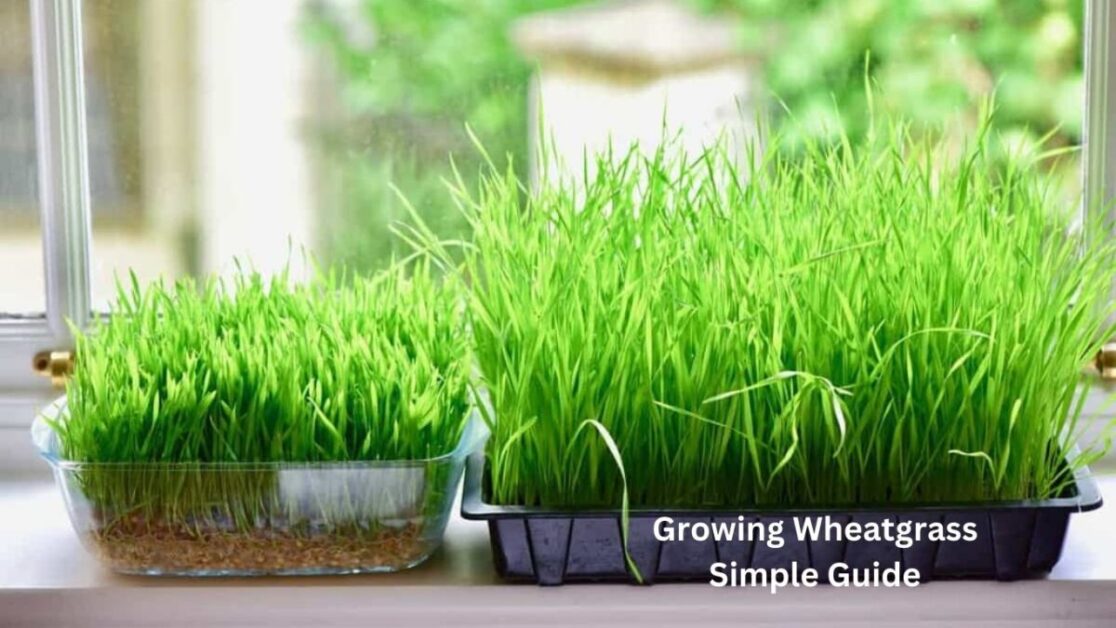
Wheatgrass, with its vibrant green color and nutrient-rich profile, is not only a popular addition to smoothies and juices, but it can also be creatively incorporated into various dishes for a healthy boost. Whether you are a culinary enthusiast or simply looking for new ways to enhance your diet, here are a few creative ideas to incorporate wheatgrass into your meals.
Firstly, consider using wheatgrass in your salad dressings. Its fresh and earthy flavor can add a unique twist to your favorite vinaigrettes or creamy dressings. You can either blend a small amount of wheatgrass juice with the other ingredients or finely chop the wheatgrass leaves and mix them directly into the dressing. This not only adds a burst of color but also provides an additional dose of vitamins and minerals.
Another creative way to enjoy wheatgrass is by incorporating it into your baked goods. Wheatgrass powder can be easily mixed into the dry ingredients of your recipes, such as muffins, bread, or cookies. The subtle grassy taste of wheatgrass adds a refreshing and healthy element to your treats without overpowering the overall flavor. Additionally, the natural green hue of wheatgrass can add an interesting aesthetic appeal to your baked creations, making them visually appealing as well.
These are just a few suggestions to inspire your culinary adventures with wheatgrass. From experimenting with smoothie bowls to creating wheatgrass-infused sauces, the possibilities are endless. Embrace the versatility of this nutritious plant and let your creativity take flight in the kitchen. So why not elevate your meals with a touch of this vibrant and wholesome ingredient? Your taste buds and body will thank you for it.
Exploring Different Uses for Growing Wheatgrass
Wheatgrass has gained popularity in recent years due to its numerous health benefits, but its uses go beyond just juicing and smoothies. This versatile plant can be incorporated into various aspects of daily life, offering both practical and aesthetic uses.
One of the most common uses for wheatgrass is as a natural remedy for various skin conditions. Its high chlorophyll content and antioxidant properties help cleanse and rejuvenate the skin, making it a valuable ingredient in skincare products. Wheatgrass extracts can be found in creams, lotions, and serums that aim to soothe and heal issues such as acne, eczema, and psoriasis. Additionally, its anti-inflammatory effects can reduce redness and irritation, promoting a healthier complexion.
Another interesting use for wheatgrass is its potential as a household cleaner. Its natural deodorizing properties make it an effective ingredient in homemade cleaning solutions. Mixing wheatgrass juice with water and a few drops of essential oils can create a refreshing and non-toxic disinfectant for surfaces. Moreover, the grass itself can be used as a natural scrubbing tool, providing an eco-friendly alternative to synthetic sponges or brushes.
With its wide range of applications, wheatgrass proves to be a versatile addition to a holistic lifestyle. From enhancing skin health to providing a greener cleaning alternative, exploring the versatility of wheatgrass can lead to new and innovative uses that promote wellness both inside and outside the body.
Here’s a simple guide in table format for growing wheatgrass:
| Step | Description |
|---|---|
| 1. Selecting Seeds | Choose high-quality, organic wheatgrass seeds. Avoid treated seeds or those meant for planting wheat for flour. |
| 2. Preparing Containers | Select shallow trays or containers with drainage holes. Clean and sterilize containers before use. |
| 3. Soil or Medium | Use a soilless growing medium such as organic potting mix, coco coir, or peat moss. |
| 4. Soaking Seeds | Soak wheatgrass seeds in water for 8-12 hours to initiate germination. |
| 5. Planting Seeds | Spread soaked seeds evenly on the moist growing medium, ensuring good coverage without overcrowding. |
| 6. Watering | Water the seeds thoroughly, ensuring the growing medium stays consistently moist but not waterlogged. |
| 7. Providing Light | Place the trays in a location with indirect sunlight or under grow lights. Avoid direct sun, which can scorch the tender seedlings. |
| 8. Maintenance | Keep the growing medium moist by watering lightly as needed. Ensure good air circulation to prevent mold or fungal growth. |
| 9. Growth Period | Wheatgrass typically takes 7-10 days to reach harvesting height (about 6-8 inches). |
| 10. Harvesting | Use sharp scissors to cut wheatgrass just above the soil level when it reaches the desired height. |
| 11. Consumption | Enjoy wheatgrass fresh by juicing it immediately after harvesting. It can also be added to smoothies or used in salads. |
| 12. Replanting | After harvesting, compost the remaining wheatgrass and replant trays for continuous harvests. |
This simple guide outlines the basic steps for growing wheatgrass indoors. Adjustments can be made based on specific growing conditions and preferences.
Troubleshooting Common Issues in Growing Wheatgrass
Wheatgrass is a resilient and versatile plant that can thrive in various growing conditions. However, as with any type of agriculture, there can be challenges that arise during the growth process. Understanding and troubleshooting common issues in wheatgrass growth is crucial for ensuring a successful harvest.
One common issue that gardeners may encounter is overwatering. While it is important to keep the soil moist, excessive watering can lead to root rot and hinder the growth of wheatgrass. To avoid this, it is recommended to allow the soil to dry slightly between waterings. Additionally, providing proper drainage for the plants is essential to prevent waterlogged roots.
Another issue that may arise is inadequate lighting. Wheatgrass requires ample sunlight or artificial light to thrive. Insufficient light can result in stunted growth and pale leaves. To address this, ensure that your wheatgrass receives at least six to eight hours of direct sunlight per day or use grow lights to supplement natural lighting. Proper positioning of the plants near windows or in well-lit areas of your home or garden can greatly enhance their growth.
How long does it take for wheatgrass to grow?
Wheatgrass typically takes around 7-10 days to reach the ideal height for harvesting.
Can wheatgrass be grown indoors?
Yes, wheatgrass can be grown indoors as long as it receives ample sunlight or artificial light.
What is the ideal temperature for growing wheatgrass?
Wheatgrass thrives in temperatures between 60 and 75 degrees Fahrenheit (15-24 degrees Celsius).
How often should I water my wheatgrass?
Wheatgrass should be watered once or twice a day, keeping the soil moist but not waterlogged.
Can I reuse the soil after harvesting wheatgrass?
It is recommended to replace the soil after harvesting wheatgrass to ensure optimal growth in subsequent batches.
How long can wheatgrass be stored?
Freshly harvested wheatgrass can be stored in the refrigerator for up to a week.
Can pets consume wheatgrass?
Wheatgrass is safe for pets to consume and can provide them with additional nutrients.
Can I use wheatgrass in smoothies and juices?
Yes, wheatgrass can be juiced or blended into smoothies to enjoy its nutritional benefits.
Can wheatgrass be used for decorative purposes?
Yes, wheatgrass can be used as an attractive and vibrant decoration in floral arrangements or as a centerpiece.
What are some common pests that can affect wheatgrass growth?
Common pests that can affect wheatgrass growth include aphids, mites, and fungus gnats.
How can I prevent pests from damaging my wheatgrass?
To prevent pests, ensure proper ventilation, keep the growing area clean, and use organic pest control methods if necessary.
Can I plant wheatgrass outdoors?
Yes, wheatgrass can be planted outdoors as long as the temperature and growing conditions are suitable.
How can I incorporate wheatgrass into my daily diet?
Wheatgrass can be consumed as a shot, added to smoothies, juiced, or used in salads and other recipes.
What are some alternative uses for wheatgrass?
Wheatgrass can be used in DIY skincare products, as a natural dye, or even as a cat grass for pets.


